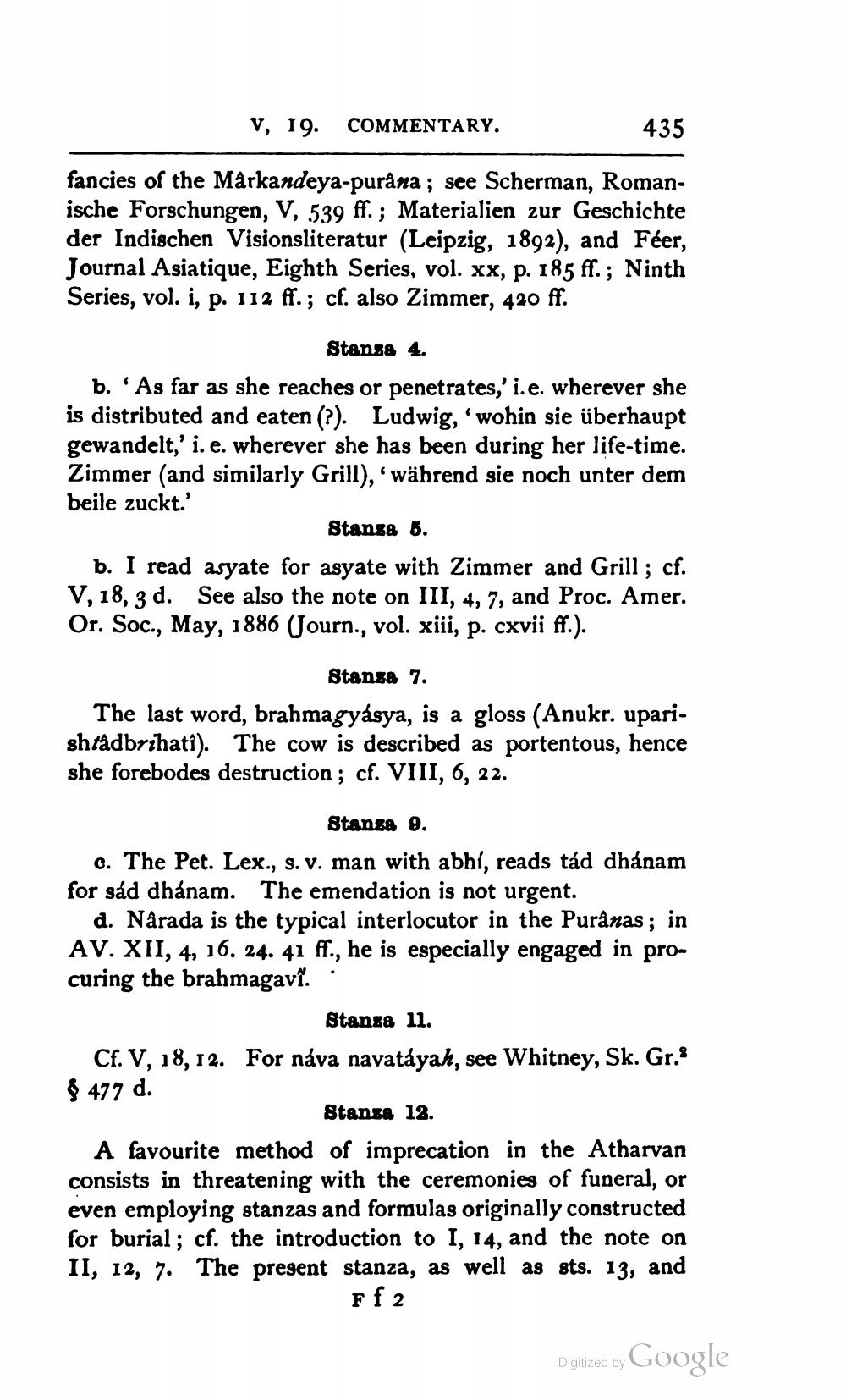________________
V, 19. COMMENTARY.
435
fancies of the Mârkandeya-purâna; see Scherman, Romanische Forschungen, V, 539 ff.; Materialien zur Geschichte der Indischen Visionsliteratur (Leipzig, 1892), and Féer, Journal Asiatique, Eighth Series, vol. xx, p. 185 ff.; Ninth Series, vol. i, p. 112 ff.; cf. also Zimmer, 420 ff.
Stanza 4.
b. 'As far as she reaches or penetrates,' i. e. wherever she is distributed and eaten (?). Ludwig, 'wohin sie überhaupt gewandelt,' i. e. wherever she has been during her life-time. Zimmer (and similarly Grill), ' während sie noch unter dem beile zuckt.'
Stanza 5.
b. I read asyate for asyate with Zimmer and Grill; cf. V, 18, 3 d. See also the note on III, 4, 7, and Proc. Amer. Or. Soc., May, 1886 (Journ., vol. xiii, p. cxvii ff.).
Stanza 7.
The last word, brahmagyásya, is a gloss (Anukr. uparishrâdbrihatî). The cow is described as portentous, hence she forebodes destruction; cf. VIII, 6, 22.
Stanza 9.
c. The Pet. Lex., s. v. man with abhí, reads tád dhánam for sád dhánam. The emendation is not urgent.
d. Nârada is the typical interlocutor in the Purânas; in AV. XII, 4, 16. 24. 41 ff., he is especially engaged in procuring the brahmagavî.
Stanza 11.
Cf. V, 18, 12. For náva navatáyah, see Whitney, Sk. Gr.3 § 477 d.
Stanza 12.
A favourite method of imprecation in the Atharvan consists in threatening with the ceremonies of funeral, or even employing stanzas and formulas originally constructed for burial; cf. the introduction to I, 14, and the note on II, 12, 7. The present stanza, as well as sts. 13, and Ff2
Digitized by
Google




